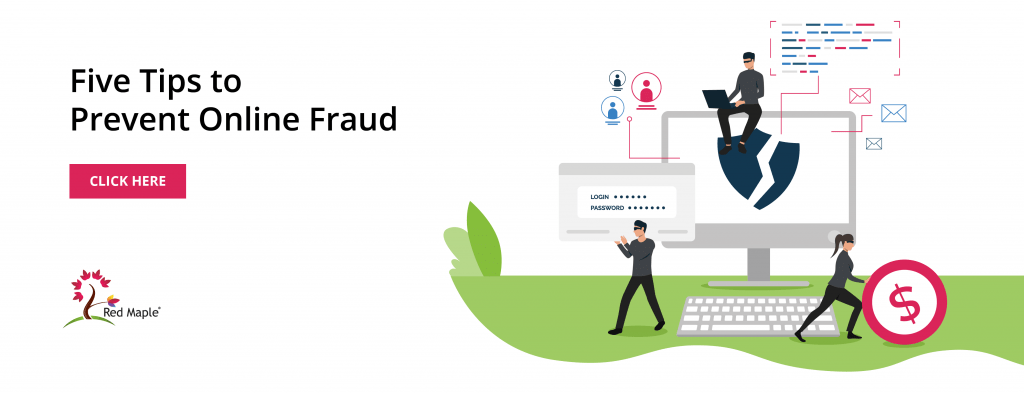New Trends in retail for a Post-COVID-19 world

Index Of The Blog

Let’s be honest. We all hoped things would return to ‘normal’ after a few months into the pandemic. But it is becoming clear the novel coronavirus, unemployment, and ongoing concerns about our health have changed many things in our world – including the retail industry. Consumers are becoming even more accustomed to shopping online and businesses are jumping through hoops to make it convenient and offering loyalty discounts. According to McKinsey & Company, Red Maple and other experts, those demands have created a new normal in retail. If you are a retailer and have not already adapted, it may be time to change and follow the New Trends in retail.
Three retail trends unfolding in the current and post pandemic world are availability, convenience, and value.

TREND ONE: AVAILABILITY
Since panic buying emptied shelves in March, consumers have been more willing to ditch the stores where they previously shopped to find what they need elsewhere. Another shopping frenzy lies ahead with the holidays. So, retailers need to increase inventory and step up production of popular items to prevent shortages. Just as critical – retailers need to offer those products online to meet e-commerce demands.
- E-commerce: As safer-at-home orders and anxieties about getting infected persisted, businesses have had to increase online sales. Since the beginning of the outbreak in the U.S., e-commerce has risen 46%, according to Signifyd. In April, 74% of shoppers bought more products online than in a store, a 30% increase from March. New Trends in retail. This trend is expected to grow. According to a McKinsey report, e-commerce purchases from new or infrequent shoppers are expected to increase 169% within the next year.

- Artificial intelligence and virtual reality: With more people online during the pandemic, businesses are ramping up their efforts to improve shopping experiences with artificial intelligence (AI) and virtual reality (VR). Those technologies help customers find and buy the items they want faster and more easily. For example, Google Images and Pinterest Lens use AI to identify products in photos, and then search for those products across multiple retailers. According to Pinterest, searches on Lens have been increasing by about 140% year-over-year since 2018. Major brands such as Amazon and Target have VR features that allow shoppers to picture furniture in their homes. New Trends in retail. Customers are also using VR and AI to try makeup, hair styles, and clothing.
The trend in augmented reality is expected to reach $133 billion worldwide by next year and grow exponentially in the next decade as businesses create safe virtual experiences. In New Zealand, one town has opened up a virtual mall with local businesses so people can shop without masks and the fear of getting COVID. The goal was to help businesses through the lockdowns. Another e-commerce company teamed up to give the home-bound an online clubbing experience with a three-hour live-streamed show. New Trends in retail. One brand said it increased sales of its whiskey products 70% during the show. The companies are now creating other live-streaming marketing opportunities for the future.
- Social media: With e-commerce at an all-time high, it’s a great time for retailers to build online relationships with customers. Retailers can earn trust and build confidence in their products and services by having customers complete surveys and write reviews. Studies show 76% of consumers trust online reviews as much as personal recommendations.
From home, people are messaging businesses on their social media platforms to ask questions, learn about discounts, and more. It is truly a captive audience for retailers. They can create lifelong customers with high-level service on social media by replying quickly to messages.
- Pop-up shops: Pop-up shops, or stores that set up a tent for a day or weekend, are hot right now. They offer people who are not comfortable going to malls or department stores a chance to shop in a single, temporary store. According to Storefront, this kind of retail is expected to generate $80 billion on an annual basis. New Trends in retail. The pop-up shops lure shoppers in with unique and personalized items on sale along with a time limit to buy the goods.
TREND TWO – VALUE
Job uncertainty and worries about more coronavirus outbreaks are keeping people fiscally cautious. Consumers are spending less money, focusing on the necessities and value. A McKinsey report found 44% of adults are watching their spending closely. In the near future, retailers will have to continue the trend of setting prices in-line with reduced spending.
- Mindful shopping: Since many consumers are tightening their belts, they are becoming more aware of what they are buying and the impact the brand’s ethics make on the world. It’s a great time for retailers to play up green manufacturing and waste methods, mission statements, and a philanthropy. Companies that take a stand on ethical or environmental issues can build lasting customer loyalty. New Trends in retail. A study by Accenture shows 61% of consumers are making “more environmentally friendly, sustainable or ethical purchases, with 89% likely to continue post-crisis.”
- Local business: The coronavirus has prompted people to be more aware of local businesses suffering and are more focused on supporting them. A survey found 56% of consumers are shopping in neighborhood stores or buying more locally-sourced products. Most of the consumers (84%) plan to continue buying local in the future.
Experts predict people will shop local post pandemic to make sure their local stores stick around. It’s a great time for local businesses to focus on great service, personalization, and low pricing.
TREND THREE: CONVENIENCE
Pickup and delivery services are exploding as customers choose to stay home. Continuing restrictions and “safer-at-home” orders mean those services will only expand to meet the demands of customers, according to a McKenzie report. Since the pandemic began, businesses have increased ordering through apps and deliveries by 19% and curbside pickups by 21%.
- BOPIS (Buy Online, Pickup in Store): According to Adobe Analytics, orders placed online and picked up in stores grew by 208% from April 2019 through April 2020. Pharmacies, restaurants, and grocery stores have all gotten in the game, along with many major retailers such as Kohl’s, Best Buy and Dick’s Sporting Goods. New Trends in retail. With the coronavirus here for the foreseeable future, BOPIS is expected to become even more popular because people like it, it’s convenient, and safe.
- Going dark trend: Some brick-and-mortar stores have, or plan to, go dark. Those dark stores have been turned into warehouses to fulfill delivery and pickup orders. Whole Foods is one example of a store that recently converted its buildings in Los Angeles and New York to dark stores. COVID has also driven some restaurants to create “ghost kitchens” or places that prepare meals solely for delivery.
- More payment options: Retailers can help customers make the transition from in-person shopping to online by offering easy and convenient ways to pay. Payment apps such as Zelle, Apple Pay, PayPal and Venmo offer easy and safe options for paying. A Harris Poll survey says roughly 4 in 5 Americans have access to mobile payment apps. Since millennials are most likely to use the apps, retailers can capture that demo by adding the payment methods in checkout. Businesses can integrate with Microsoft Dynamics Retail Solution to enhance their retail capabilities and boost sales opportunities.
- Same-day delivery: The absolute convenience of clicking a button and having an item delivered the same day has driven this trend up 88% since the beginning of the year, according to PwC. Most consumers are willing to pay for same-day service. Now that they’ve had a taste of it, reports show consumers want more delivery speed in the future.
The Bottom Line
The rules to wear masks and social distance for COVID-19 have forced many people to stay home and shop. Retailers need to adjust their strategies to account for the pandemic and survive. The bottom line is that businesses now have the opportunity to cater to their customers with products and services on demand and deliver them quickly and safely with good value.













